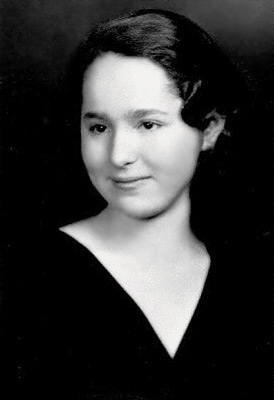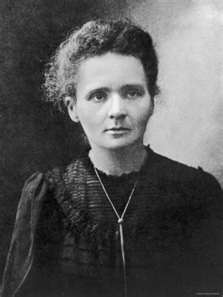
By the 1920s in the United States, many women were going to college. In fact the percentage of women attending universities would decline and not rise to the same level again until the late 1970s. Thirty to forty percent of graduate students in the 1920s were women and 12 to 15 percent of science and engineering PhDs were women, but getting a graduate degree and getting a job were two different things. Most of these women ended up teaching in women’s colleges. Coeducational universities, government, and industry jobs were reserved for men, so for a woman such as Barbara McClintock who wanted to do scientific research the going was difficult.
At the time little was known about genes and their role in heredity. Some scientists didn’t even accept the ideas of Gregor Mendel (remember smooth and wrinkled, green and yellow peas from high school.) By the time McClintock received her PhD in 1927, she had already done ground breaking work in genetics and gathered around her a group of men who wanted to work with her. Most of them already had their degrees, but recognized in her a kind of insight into the cell that others didn’t have. George Beadle once complained to the department chair at Cornell, Rollin A. Emerson, that McClintock interpreted his data more quickly than he did. Emerson responded that he (Beadle) should be glad that someone could explain it. In spite of this recognition, she was an instructor not a professor and would spend years in low paying jobs.
Barbara McClintock was born in 1902, the third daughter of Dr. Thomas Henry McClintock and Sara Handy McClintock. Thomas was a homeopathic physician and Sara had been raised in affluence until she defied her parents to marry Thomas. Barbara’s parents had wanted a boy and her mother seemed to feel that it was somehow her fault that her first three children were girls. This created a distance between her and Barbara that would last a lifetime. Her mother also may have had difficulty understanding a daughter who wasn’t interested in “girly things.” In spite of the fact that the longed for boy was born two years later, Barbara’s father raised her as a boy. She took to it well, loved athletics and nature, and had little patience with the way other girls wanted to play. There must have been early indications of her strong will. When she was four months old, her parents changed her name from Eleanor to Barbara, because Eleanor was too “sweet” a name for their baby girl.

Barbara never felt mistreated by her mother, but she wasn’t supported either. The tension between them and the stress of raising four young children prompted her mother to frequently send Barbara to stay with an aunt and uncle. This uncle sold fish from the back of a wagon and Barbara loved to go with him. He taught her to understand mechanical things and to love nature.
Although Sara gave in to Thomas when he indulged Barbara and told a neighbor to mind her own business when she wanted to teach her “womanly” things, she drew the line at letting her daughters pursue higher education. She had talked Barbara’s oldest sister out of accepting a full scholarship to Vassar, believing that too much education would make her less likely to find a husband. When Barbara graduated from high school, her father was serving in the army in Europe and Sara put her foot down. Unable to go to college, Barbara got a job in an employment agency and studied incessantly at the library in the evenings and on weekends. Fortunately, when Thomas returned from the war, he immediately let Barbara enroll at Cornell in the agriculture department where tuition was free.

Barbara thrived at Cornell. She was thoroughly modern, bobbing her hair, smoking cigarettes, wearing pants even when she wasn’t in the field, and even playing banjo with a jazz group. She was small and slender with a big laugh and a good sense of humor. Later Barbara would be seen as something of a loner, but many things and relationships just fell by the wayside because of her intense involvement with her work. She always had a few good friends and good relationships with her family. In spite of pressure from her mother and her steady beau, she made a decision not to marry knowing that she had a dominant personality and a drive to work.
After receiving her degree in 1923, Barbara continued as a graduate. For her research Barbara worked with the maize plant and identified its 10 chromosomes and matched them with visible traits. She created a type of map locating the areas that determined whether or not a plant would have purple, waxy kernels for example. Most of her fellow students and colleagues didn’t understand the massive amounts of data, microscope work, and probability analysis she had done. Fortunately, similar work had been done on the fruit fly by Thomas Hunt Morgan at Columbia University and one of his former students, Marcus Rhoades, came to Cornell as a professor. Rhoades took on the task of explaining Barbara’s work. Both Rhoades and Morgan would be supporters of McClintock throughout her career.
After graduating at Cornell, Barbara stayed on as an instructor for a few years at a level far below her colleagues, in order to continue her research. When she was unable to find a job as a professor, Barbara moved from one research grant to another over the next few years developing a reputation as one of the best in the world in maize genetics, but never being welcomed as a professor. At Cal Tech, she was not allowed in the faculty club and only Linus Pauling welcomed her into his lab. In spite of this, Barbara loved the work and was thrilled to finally be offered a job at the University of Missouri as an assistant professor working with Lewis Stadler in 1936.

The environment at Missouri was very conventional and the culture shock went both ways. Eventually, the administration came to see Barbara as a troublemaker. In 1941, she asked the dean if she would ever be promoted to a permanent position. He told her that if Stadler ever left, she would probably be fired. It was the last straw and Barbara took a “leave of absence” and told him she wouldn’t be back. After so many years of trying to get a job commensurate with her experience and expertise, she gave up. But she still cared about her corn and her research.
In desperation, Barbara contacted Marcus Rhoades and asked where he planted his corn. He told her Cold Spring Harbor, a research center established in 1890 for evolution research. She managed to get an invitation to plant her corn for the summer, then a temporary position, then finally support through the Carnegie Foundation for a permanent position. It was perfect. She could focus solely on her research without worrying about teaching or the politics of the administration.
Although Barbara’s work had already been incorporated into textbooks and would appear in books such as Great Experiments in Biology (Gabriel and Fogel) and Classic Papers in Genetics (ed. James A. Peters), Cold Spring Harbor is where she did the work that finally earned her the Nobel Prize. In 1929, working with a graduate student, Harriet Creighton, they had proved that genes were carried on chromosomes and that the exchange of chromosomal parts created variety in the species. Barbara also had seen evidence that genes could move on a chromosome and between chromosomes, but she needed proof. After six years of research at Cold Spring Harbor, she had her proof. Genes didn’t have to have a fixed position. She also discovered an activator gene, one that could turn another gene on and off, and a gene that could cause the activator gene to move, causing another gene to turn off. Today this is called genetic transposition and the moving gene is sometimes called a “jumping” gene.

Barbara’s research was unfortunately 15 – 20 year before its time. Many in the scientific community ignored her or thought she was crazy. In the genetics community, no one thought she was crazy, but her research was hard to follow and understand. Many scientists still held to the belief that the structure of chromosomes was stable and fixed. Frustrated she finally quit publishing in 1953. She never quit collecting date and began to see evidence of transposition in other species. Barbara even took a couple of years to go to Latin America to train cytologists and to study indigenous maize varieties and the geographic distribution of specific chromosomes.
Finally in the 1960s and 70s the scientific community began to catch up with McClintock. James Shapiro and others found transposable elements in bacteria and other species. People began flocking to Barbara’s door to learn from her and the awards began to come. Then in 1983, she heard the announcement on the radio that she had been awarded the Nobel Prize in Physiology or Medicine and that the Nobel committee called her discovery “one of two great discoveries of our time in genetics.” (The other was the discovery of the structure of DNA.) The Prize was unshared and praised throughout the scientific community. The recognition was long awaited.
Barbara continued her work schedule, reading voraciously in many different areas, and continuing her exercise routine. As she approached 90 years old, she even slowed down to an 8-9 hour work day. After finally being recognized for her great contributions, Barbara McClintock died of natural causes at her home on Sept. 2, 1992.
Resources
Nobel Prize Women in Science by Sharon Bertsch McGrayne
Read about other Famous Women in Math and Science
















